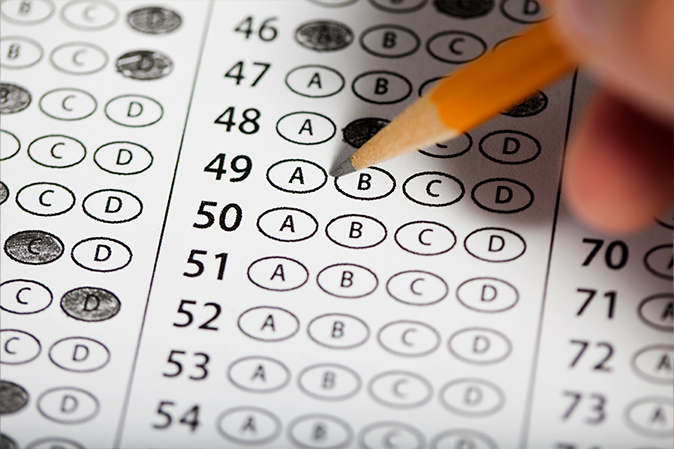Thank you!
The full article is available below.
You will also receive a follow-up email containing a link so you can come back to it later.

We talk a lot with students gearing up for an LSAT about the ideal way to take an LSAT practice test. One of the pieces we stress the importance of including is the Experimental Section.
Every officially-administered LSAT contains an additional 35-minute, unscored “experimental” section. This section will be either a third LR or second RC. It’s designed to pre-test questions that could potentially be used in a scored section on a future test. Essentially, the unscored section lets the test makers determine both question validity and difficulty before those questions are officially used.
There are a few reactions people tend to have when they learn this. The first is anger: you devote 20% of your LSAT efforts to something that cannot help you, and you aren’t told when that’s happening. It feels frustrating, even though every tester before you went through the same thing to ensure a fair test.
The second reaction is a desire to somehow game the system, to figure out which section doesn’t count. Knowing in advance would be ideal, but it’s risky if you’re wrong. Below, we examine three common beliefs about the experimental section.
It’s Always One of the First Three Sections
Previously, the experimental section was always among the first three sections. In October 2011, LSAC removed this limitation, allowing the experimental section to appear among the final two sections. Now, all five sections are fair game, and you cannot assume it will appear before the break.
Everyone Has the Same Experimental Section
Originally, all test takers of a given administration had the same experimental section. This changed in June 2007 when LSAC started using test forms that gave different experimental section numbers to different students, introducing variability. Now, your experimental section can be any of the five, and your neighbor’s is likely different.
It Will Be Identifiable When You Get to It or at the Conclusion of the Test
This is a pervasive myth. Test takers often think they can identify the experimental section based on “feeling” or perceived difficulty. This is unreliable. Test makers intentionally manipulate familiarity and difficulty to prevent detection. Additionally, LSATs do not always have the same number of questions, making it impossible to calculate which section is experimental based on totals.
- “I knew section 2 didn’t count because it felt weird.”
- “The questions in my LR section were different/harder than anything I’d seen before, so I know that was the experimental.”
- “The Reading Comp section with 26 questions wasn’t real because if it counted, the test would’ve only had 99 total questions.”
The moral: treat each section as if it could be experimental and do your best on every question.
Footnotes:
1 There’s a happy ending to my friend’s story! He retook the LSAT and ended up at Georgetown, where he is doing exceptionally well.
2 You cannot determine the experimental section after the test using only your own experience. By comparing your exam to what other test takers encountered, you can identify which sections counted and which did not.
Unlock the Full Article
Bring Your Goals Within ReachTell us a little about yourself and your goals to display the full article and gain access to more resources relevant to your needs.
Interested in reading more? Fill out the form to read the full article.
Ready for test day success?
Take the next step towards complete LSAT mastery and reach your full score potential with PowerScore’s collection of LSAT prep tools.
